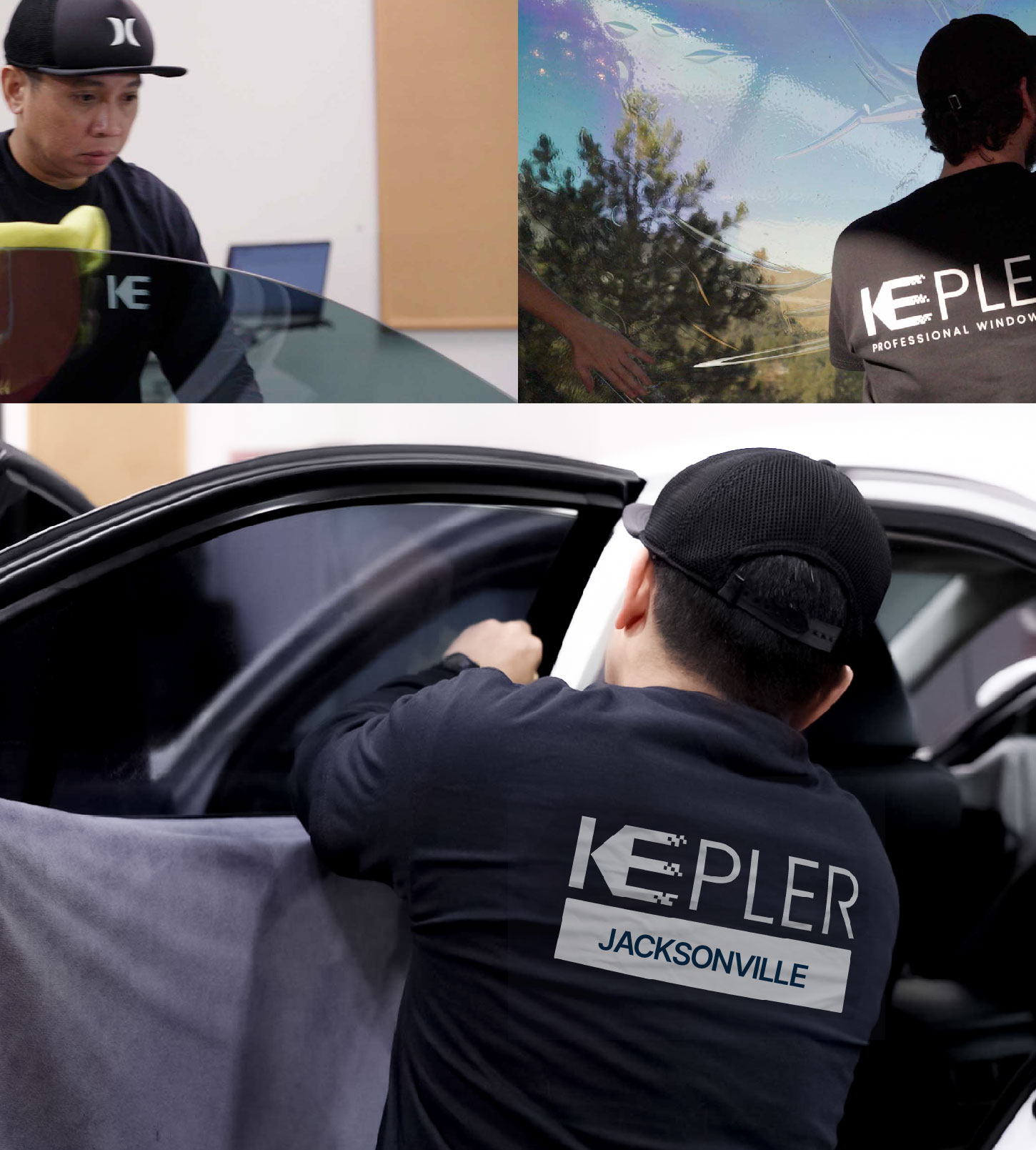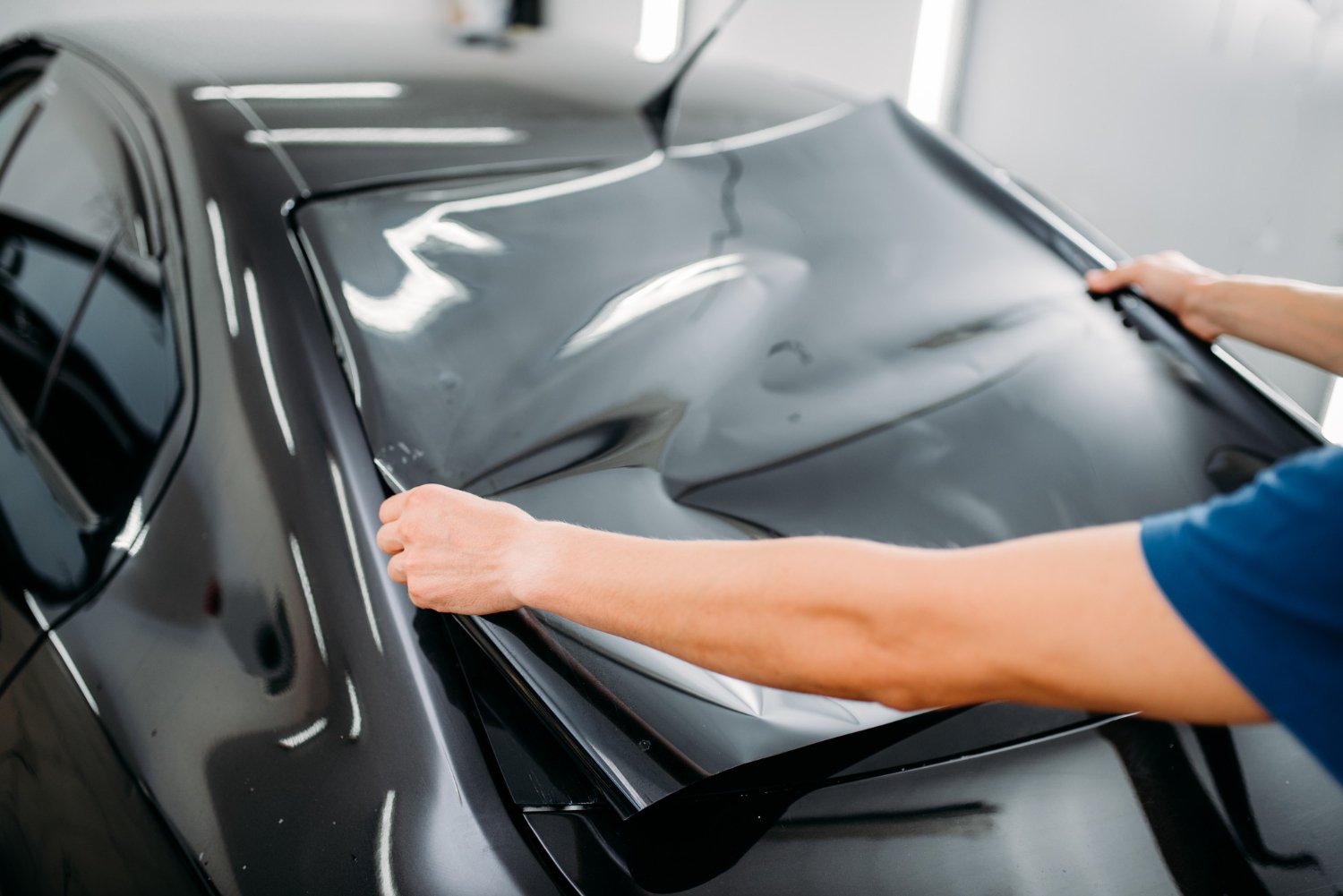Reduce Interior Fading with Davinci of Michigan’s UV Tinting Services
A Comprehensive Guide to Recognizing Automobile Window Color and Its Advantages
Vehicle window tinting serves even more than just a visual objective for cars. It uses various kinds, each with distinctive functions and advantages. Recognizing these choices, together with legal regulations and upkeep ideas, is crucial for any kind of car owner. The benefits might greatly boost driving convenience and vehicle long life. As one checks out the nuances of home window tinting, the concern arises: what kind of tint is best fit for specific requirements?
Comprehending Vehicle Home Window Tint: What It Is and How It Functions
Auto window tint offers as a safety obstacle that boosts automobile looks while providing practical advantages. This slim movie is applied to the indoor surface area of automobile home windows, lowering glare and blocking damaging ultraviolet (UV) rays from the sun. By filtering system sunlight, vehicle window color aids to control the interior temperature level of the automobile, bring about raised convenience for passengers and lowered reliance on air conditioning.Additionally, it shields the car's inside from fading, preserving both upholstery and control panel products. The tint can additionally boost personal privacy, making it harder for outsiders to see inside the car. Particular types of home window color can boost security; in the event of a crash, the film assists hold destroyed glass with each other, lowering the risk of injury from flying shards. Generally, vehicle window tint offers both useful and aesthetic purposes, making it a prominent option among automobile owners.
Kinds Of Home Window Tint: An Introduction of Options
When thinking about window color options, numerous kinds are available, each with unique attributes. Dyed, metalized, and ceramic window colors use varying degrees of warm denial, UV security, and aesthetic allure. Comprehending these differences can assist vehicle proprietors make informed selections based upon their demands and preferences.
Dyed Home Window Tint
Dyed home window color represents a preferred option among auto proprietors looking for a effective and affordable way to enhance their vehicle's visual appeals and privacy. This type of color is created by positioning a layer of color between a glue layer and a safety finishing, leading to a darkened look that decreases glare and enhances aesthetic comfort. While colored window tint successfully obstructs damaging UV rays, it might not provide the very same degree of heat being rejected as other tint types. In addition, its color can discolor in time, possibly lessening its efficiency. Despite these downsides, dyed home window color remains popular for its cost-effectiveness and ability to supply a sleek, elegant look to different lorry designs.
Metalized Home Window Color
Metalized window tint offers a balance of design and functionality, making it a popular choice among car proprietors. This kind of color integrates metallic bits within the film, enhancing both visual charm and warm rejection. The reflective quality of metalized tint helps to reduce glow and enhance privacy, while additionally giving UV security, which safeguards the car's interior. Additionally, metalized home window tint can reinforce home window strength, possibly stopping ruining during mishaps. Nonetheless, it is essential to keep in mind that the metal parts can hinder digital signals, such as GPS and cell phone function. Overall, metalized window color supplies a reliable option for those looking for a combination of sun, longevity, and look protection for their lorries.
Ceramic Window Tint
Ceramic home window tint represents a sophisticated option in the range of vehicle window films, using distinct benefits over conventional colors. Unlike dyed or metalized movies, ceramic colors utilize innovative ceramic fragments, which successfully decline warmth and UV rays without compromising presence. This technology assures that cars remain cooler, reducing reliance on cooling and improving fuel effectiveness. Furthermore, ceramic home window colors are much less likely to disrupt electronic gadgets, such as general practitioner or mobile signals, making them a sensible choice for modern cars. Their longevity and scrape resistance add to a much longer life expectancy contrasted to various other types of tints. Generally, ceramic window tint gives superior performance, comfort, and security, making it a favored alternative for critical lorry owners.
Advantages of Auto Window Color: Beyond Aesthetics
While several people associate vehicle home window tint with improved style, its advantages expand far past plain visual appeals. One substantial advantage is heat reduction; home window color can block as much as 99% of harmful UV rays, protecting and keeping the indoor colder furniture from fading. This not just enhances comfort during warm climate yet additionally lowers dependence on cooling, resulting in boosted gas efficiency.In enhancement, car home window color offers an added layer of privacy and safety and security. Colored windows make it difficult for outsiders to see inside the vehicle, which can deter burglary and secure valuables. Additionally, several colors enhance the glass, minimizing the possibility of shattering in the occasion of a mishap, thus enhancing safety.In enhancement to these useful advantages, car window color can also add to glare decrease, boosting exposure for drivers and travelers alike. This multifaceted method to convenience and safety makes window color a beneficial investment for automobile owners.
Legal Factors To Consider: Tinting Regulations by State
Prior to dedicating to vehicle window tint, automobile proprietors should browse an intricate landscape of tinting policies that important source differ by state. Each state has specific laws regulating the permitted levels of tint darkness and reflectivity for different home windows, including windshields, front side windows, and rear home windows. These policies often consist of noticeable light transmission (VLT) percentages, which dictate just how much light can pass with the colored glass.Some states permit darker tints on back windows while limiting front side and windshield tints for safety factors. Additionally, certain states may call for a certificate from the manufacturer to verify compliance with tinting laws. Breaking these laws can lead to fines, obligatory elimination of the tint, or both. Subsequently, it is vital for automobile proprietors to investigate their state's legislations completely to assure lawful conformity before setting up home window tint. This persistance can save money and time in the future.
Choosing the Right Color: Factors to Consider
When selecting the suitable home window tint for a car, several crucial factors come into play. Color darkness degrees, UV defense scores, and compliance with legal laws are necessary considerations to guarantee both aesthetic appeals and functionality. Evaluating these facets will help people make an educated choice that meets their demands and sticks to local regulations.
Color Darkness Levels
Picking the ideal tint darkness level is necessary for accomplishing the desired equilibrium between aesthetic appeals and functionality in vehicle home window tinting. Various states have varying lawful regulations pertaining to tint darkness, which can impact the option. Typically, colors see here now are measured in percentages, with lower portions showing darker tones. Darker tints supply enhanced privacy and a streamlined appearance but can decrease presence, specifically during the night. Alternatively, lighter tints keep a more open feeling, guaranteeing appropriate visibility while still giving some warm and glow reduction. People ought to consider their driving habits, regional regulations, and personal choices when deciding. Eventually, the appropriate color darkness level enhances the automobile's appearance while ensuring security and conformity with lawful standards.
UV Security Ranking
Color darkness levels play a considerable role in the general performance of vehicle window tinting, however another important element to examine is the UV protection rating of the selected tint. This score suggests the percent of hazardous ultraviolet rays that the tint can block. High-grade tints typically supply 99% or even more UV defense, guarding guests and the vehicle's interior from sunlight damages. Davinci of Michigan. Extended direct exposure to UV rays can cause skin issues and fading of upholstery, making a high UV protection rating important for wellness and long life. When picking home window color, consumers ought to prioritize this rating alongside darkness levels to ensure maximum comfort and safety while driving. Understanding these factors help in making an educated choice when buying car window tinting
Lawful Rules Conformity
Comprehending local lawful laws is essential for anybody considering auto home window tinting. Each state or area has particular laws controling the allowable levels of color darkness and reflectivity for various home windows. These laws usually specify the visible light transmission percentage, establishing just how much light can travel through the tinted glass. Non-compliance can cause fines, necessary removal of the tint, or problems during car assessments. Furthermore, some areas might have restrictions on making use of specific tinting products, calling for consumers to pick products that fulfill security standards. It is important for lorry proprietors to investigate their local legislations extensively before picking home window tint to ensure conformity and avoid prospective lawful complications.

Installation Process: DIY vs. Expert Solutions
Exactly how does one make a decision in between a do it yourself installment and working with specialist solutions for vehicle home window tinting? The selection usually pivots on spending plan, experience, and wanted outcomes. A do it yourself technique can be economical, permitting people to save money on labor expenses. It needs a certain level of ability and expertise regarding the tinting process. Those who are thorough and person Clicking Here might find success with DIY sets offered in the market.Conversely, professional solutions supply know-how and high-grade products, guaranteeing a flawless coating. Specialists often assure their work, providing comfort against potential concerns such as bubbling or peeling off. Furthermore, they are familiar with neighborhood regulations relating to tinting, which can be complicated for the ordinary auto owner.Ultimately, the decision mirrors a balance in between expense, personal ability, and the expected top quality of the tinting task. Each option has its benefits, and the ideal option depends on private circumstances and choices.
Maintenance Tips: Keeping Your Color in Leading Condition

Regularly Asked Concerns
How Lengthy Does Window Tint Commonly Last on a Lorry?
Home window tint typically lasts in between five to 10 years, relying on aspects such as top quality, application, and environmental conditions. Regular upkeep and proper treatment can expand its lifespan, making certain optimal efficiency and look over time.
Can Window Tinting Damage My Auto's Original Glass?
Window tinting, when used appropriately, does not damage an automobile's original glass. Incorrect installment or low-quality materials might lead to concerns like bubbling or peeling off, potentially impacting the glass's integrity over time.
Is Home Window Tinting Safe for All Kinds Of Cars?
Home window tinting is usually risk-free for the majority of cars, supplied the film abides by neighborhood regulations and is appropriately used. Some specialized vehicles may require particular factors to consider, making it vital to get in touch with professionals prior to setup.
Will Window Tinting Void My Automobile Guarantee?
The inquiry of whether home window tinting voids an auto guarantee typically depends upon the maker's plans. Normally, if the tint does not harm the vehicle, warranties generally remain undamaged. However, consulting the dealer is advisable.
Can I Remove Window Color Myself if Needed?
Eliminating window color oneself is feasible, but it requires mindful focus to prevent harming the glass. Individuals need to use proper tools and techniques to assure a successful removal without leaving glue deposit or scratches behind. While colored window color properly blocks hazardous UV rays, it might not use the exact same level of warmth denial as various other tint types. Ceramic home window tint represents an innovative choice in the spectrum of automotive home window films, offering distinctive advantages over traditional colors. Before committing to vehicle home window tint, lorry owners must browse a complex landscape of tinting guidelines that vary by state. These laws frequently include visible light transmission (VLT) percents, which determine exactly how much light can pass with the tinted glass.Some states allow darker tints on back home windows while limiting front side and windshield colors for safety factors. Color darkness degrees play a substantial duty in the general effectiveness of auto window tinting, yet one more vital element to examine is the UV protection rating of the selected color.